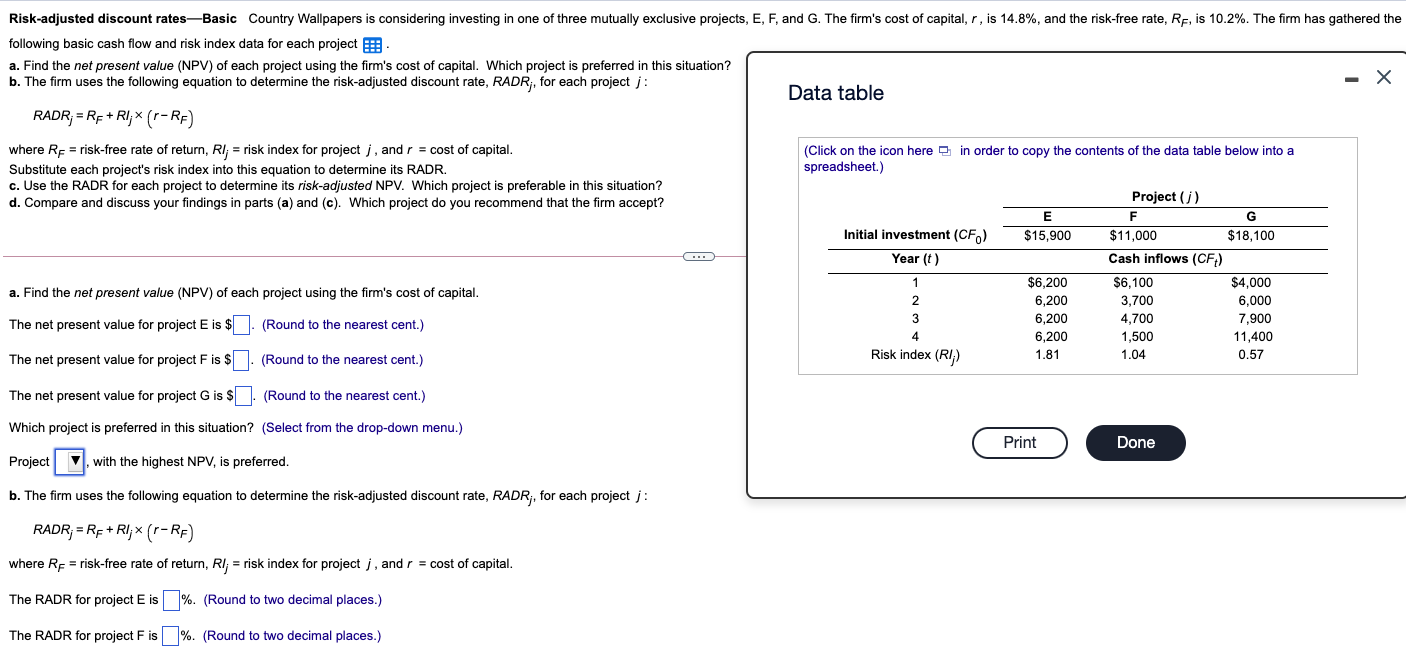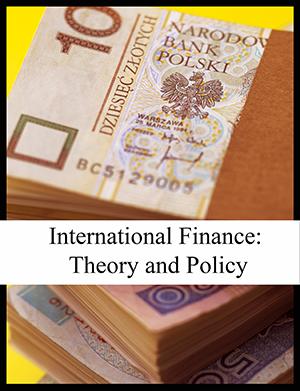

Risk-adjusted discount ratesBasic Country Wallpapers is considering investing in one of three mutually exclusive projects, E, F, and G. The firm's cost of capital, r, is 14.8%, and the risk-free rate, RF, is 10.2%. The firm has gathered the following basic cash flow and risk index data for each project a. Find the net present value (NPV) of each project using the firm's cost of capital. Which project is preferred in this situation? b. The firm uses the following equation to determine the risk-adjusted discount rate, RADR;, for each project : Data table RADR; = Rp+Rl; * (r-RF) where RF = risk-free rate of return, Rl; = risk index for project j, and r = cost of capital. (Click on the icon here in order to copy the contents of the data table below into a Substitute each project's risk index into this equation to determine its RADR. spreadsheet.) c. Use the RADR for each project to determine its risk-adjusted NPV. Which project is preferable in this situation? d. Compare and discuss your findings in parts (a) and (c). Which project do you recommend that the firm accept? Project () E F G Initial investment (CF) $15,900 $11,000 $18,100 Year (t) Cash inflows (CF) $6,200 a. Find the net present value (NPV) of each project using the firm's cost of capital. $6,100 $4,000 6,200 3,700 6,000 The net present value for project E is $ (Round to the nearest cent.) 6,200 4,700 7.900 6,200 1,500 11,400 The net present value for project F is $ (Round to the nearest cent.) 1.81 1.04 0.57 2 3 Risk index (RI) The net present value for project G is $. (Round to the nearest cent.) Print Done Which project is preferred in this situation? (Select from the drop-down menu.) Project C V, with the highest NPV, is preferred. b. The firm uses the following equation to determine the risk-adjusted discount rate, RADR;, for each project : RADR; = RF+ RI,* (r-RF) where RF = risk-free rate of return, RI; = risk index for project i, and r = cost of capital. The RADR for project E is %. (Round to two decimal places.) The RADR for project Fis%. (Round to two decimal places.) The RADR for project G is %. (Round to two decimal places.) c. Use the RADR for each project to determine its risk-adjusted NPV. The risk-adjusted net present value for project E is $ (Round to the nearest cent.) The risk-adjusted net present value for project F is $ (Round to the nearest cent.) The risk-adjusted net present value for project G is $ (Round to the nearest cent.) Which project is preferable in this situation? (Select from the drop-down menu.) Project will be preferable. d. Compare and discuss your findings in parts (a) and (c). Which project do you recommend that the firm accept? (Select from the drop-down menu.) After adjusting the discount rate, even though all projects are still acceptable, the ranking changes. Project V has the highest risk-adjusted NPV and should be chosen








